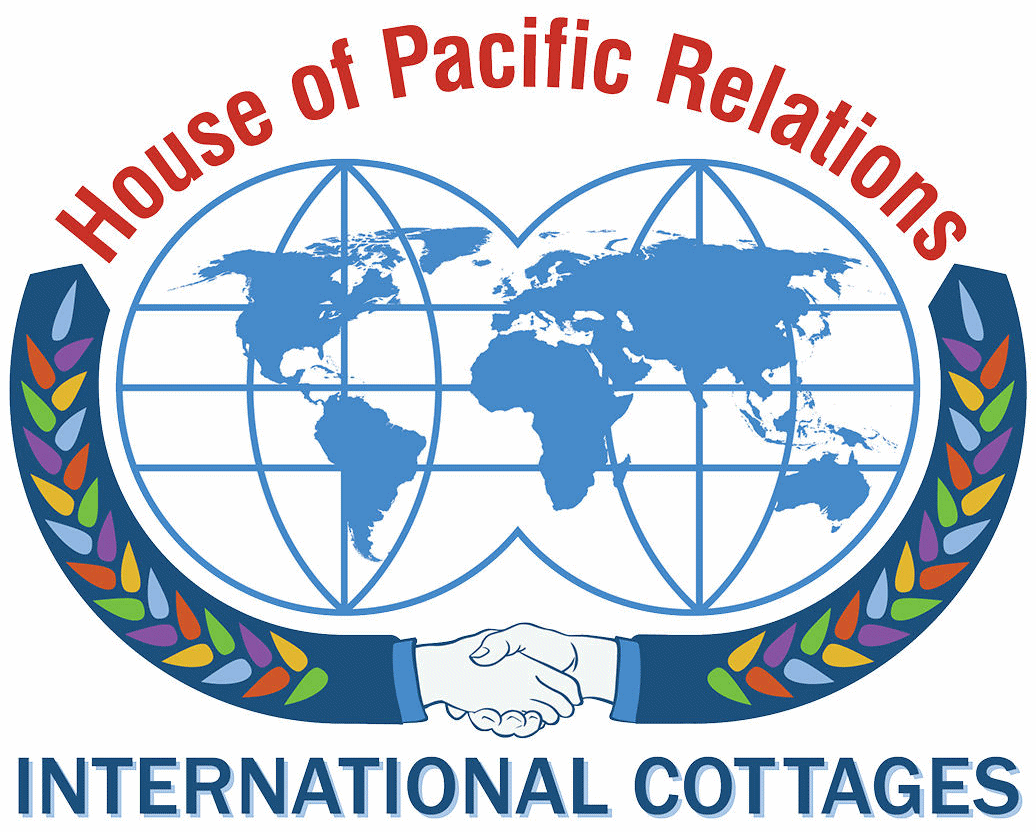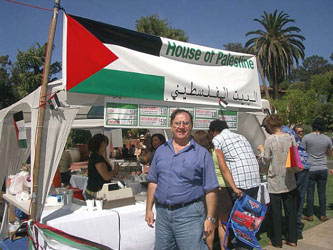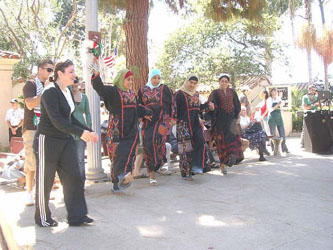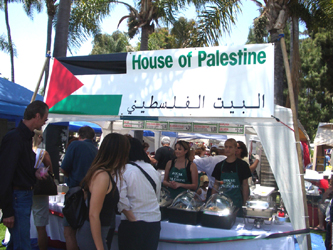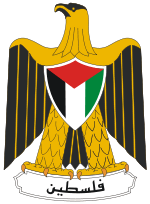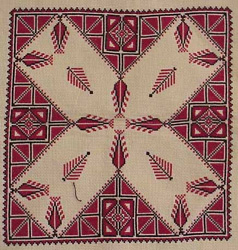
|
CULTURAL PROGRAMS |
|
In September of 2003, the House of Palestine was officially accepted as one of the international cottages under the umbrella organization of the House of Pacific Relations. Their mission is to promote the culture and heritage and friendship of the people of Palestine, by hosting various social activities. These activities will showcase folkloric dances in the traditional Palestinian costumes, as well as reading poetry, enjoying music, arts and crafts and the authentic food of palestine. It is the desire that these activities serve as instruments to educate visitors and encourage awareness among fellow human beings. Cooking class: |
||
| |
||
|
CULTURAL EVENTS |
|
The House of Palestine does not have a cottage yet, but on designated Sundays they are hosts at the Hall of Nations from 12 noon to 4:00pm. Guests can view displayed arts and crafts, read informational literature, view videotapes about Palestinian heritage, sample food and ask questions. Please refer to the Hall of Nations schedule for details and dates. Lawn Program: The entertainment is provided by folk dancers, a band of Arabic drum and oud, and sometimes they have a fashion show of costumes and dresses. Tables are set up to display artifacts and books, as well as traditional dresses and clothes to be viewed by the visitors to the park. A coffee “jelseh” (seating) is setup on the grass in the lawn area, featuring a woven carpet topped with large embroidered pillows, and serving coffee from a gold coffee pot in tiny cups for a visual taste of Palestinian hospitality. Visitors can also have their name written onto a card in the artistic lettering of the Arabic language. Food: For the Ethnic Food Fair the menu is the same as it is for the lawn program. For the December Nights the menu is also the same plus hot mint tea and Arabic coffee. |
||
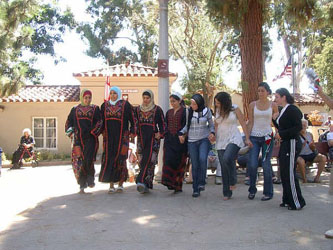 |
CHILDREN'S PROGRAMS |
|
Children Club: Dance Class: Language Class: |
||
|
HISTORICAL NOTES |
|
History of Ancient Palestinian Art: Trying to find an answer of how this type of art could have developed to such a degree of intricacy and sophistication, came by looking into the history of art and archeology. Interpreting the ancient symbols and patterns gave clues to how this intricate work emerged. The embroiderers lacked reading and writing skills, and used their creativity by choosing motives and patterns that were copied from generation to generation. It served like a language thru art. This way the ancient patterns and the art of creating beautiful costumes survived into our modern times. |
||
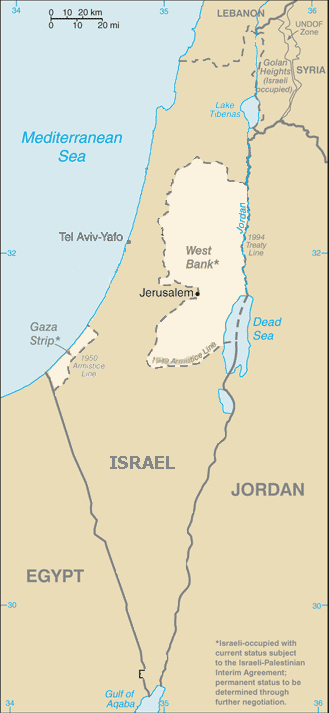 |
COUNTRY INFORMATION |
|
Population: In the Gaza Strip, East Jerusalem and the West Bank alone the population is estimated to over three million. There are over nine million Palestinians worldwide. |
||
